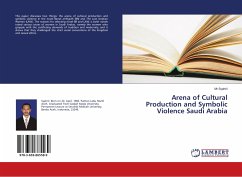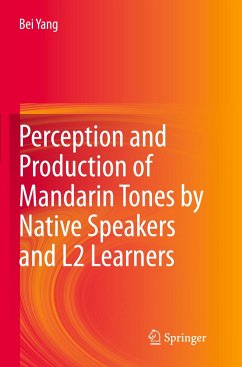
POPULAR CULTURAL PRODUCTION AND POLITICAL ACTION
A Study of the Use of Video by the Indian Population in Brazil
Versandkostenfrei!
Versandfertig in 6-10 Tagen
45,99 €
inkl. MwSt.

PAYBACK Punkte
23 °P sammeln!
The main objective of this book is to analyze the useof video and its social function among the Indiantribes in Brazil, and to understand the significanceof the videos for non-Indian audiences. To achievethis understanding it was necessary, first, to lookat the specific set of practices by means of whichsymbolic forms are created, circulated andappropriated inside the Indian villages. Second, itwas necessary to work among non-Indian people, indifferent social classes, in order to understand whatkind of meaning arises in the audience when theywatch the videos. As new technologies ofcommunicatio...
The main objective of this book is to analyze the use
of video and its social function among the Indian
tribes in Brazil, and to understand the significance
of the videos for non-Indian audiences. To achieve
this understanding it was necessary, first, to look
at the specific set of practices by means of which
symbolic forms are created, circulated and
appropriated inside the Indian villages. Second, it
was necessary to work among non-Indian people, in
different social classes, in order to understand what
kind of meaning arises in the audience when they
watch the videos. As new technologies of
communication play a key role in this process, this
thesis also contextualizes 'alternative' media work,
specially video work done by popular groups in Brazil
and other countries. It is argued here, that video is
a useful tool in the struggle for survival,
ethnically and physically. In this sense, this thesis
works with the hypothesis that the Indians show a
positive self-presentation throughout the videos that
helps to gain support from the new social movements
in Brazil.
of video and its social function among the Indian
tribes in Brazil, and to understand the significance
of the videos for non-Indian audiences. To achieve
this understanding it was necessary, first, to look
at the specific set of practices by means of which
symbolic forms are created, circulated and
appropriated inside the Indian villages. Second, it
was necessary to work among non-Indian people, in
different social classes, in order to understand what
kind of meaning arises in the audience when they
watch the videos. As new technologies of
communication play a key role in this process, this
thesis also contextualizes 'alternative' media work,
specially video work done by popular groups in Brazil
and other countries. It is argued here, that video is
a useful tool in the struggle for survival,
ethnically and physically. In this sense, this thesis
works with the hypothesis that the Indians show a
positive self-presentation throughout the videos that
helps to gain support from the new social movements
in Brazil.












